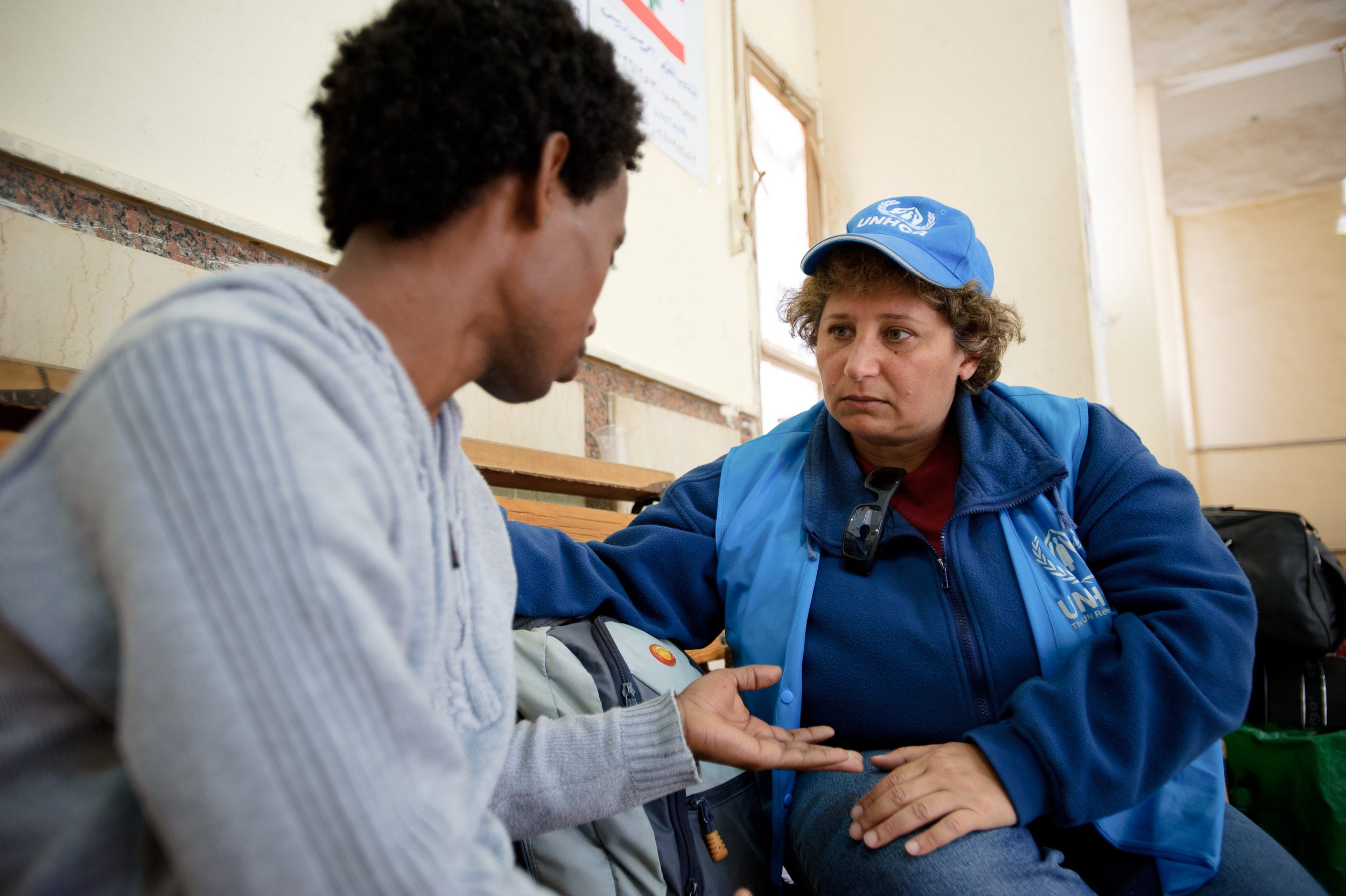Kosovo Crisis Update
Kosovo Crisis Update
Staff member attacked
Unknown gunmen shot and seriously wounded a UNHCR staff member in Tirana in an apparent attempt to seize his vehicle on Monday night. Daniel Mora Castro, UNHCR's Senior Water Development Officer, sustained a bullet wound. The 50-year-old Costa Rican was treated at the Tirana hospital, before being airlifted this morning to Geneva. The incident is under investigation.
Funding
UNHCR said on Tuesday that lack of funds could seriously set back efforts to help more than 747,000 refugees from Kosovo.
UNHCR had appealed for $143 million for its Kosovo operations for the first six months of this year. This was part of a series of consolidated appeals issued by all UN agencies and the IOM. To date, UNHCR has received just $71 million, all of which has been spent. If significant resources are not announced immediately, UNHCR will not be able to make further essential commitments to assist the refugees.
"The response by many donors - especially private donors - has been good, but we need to do more. We are providing only the most basic needs of the refugees and there is so far no end to the conflict in sight, or to the human suffering," High Commissioner Sadako Ogata said. "We are looking to our traditional donors to provide us with the financial means to cope with this emergency. I appeal in particular to countries in Europe and the European Commission. This is a European tragedy. It is essential that they bear a larger part of the burden."
She said improving camp conditions as the hot summer approaches is a top priority.
"But we also need to prepare for new refugee flows and to be ready to help refugees to return home as soon as that is possible. In the meantime, winter is only a few months away and we need to prepare for that too."
Albania
A total of 3,677 people crossed the Morini border into Albania Monday. The great majority came late in the day, all of them on foot from the Mitrovica area. They were among the most traumatized refugees to cross the border since the crisis began. Virtually all - men, women and children - were in tears. There were wounded among them, including young children. The refugees spoke again of men being separated from the main group.
The Mitrovica refugees had left their homes in a series of villages anywhere from four to six weeks ago and had been wandering on foot ever since in a meandering odyssey. They stayed for several weeks in a village identified as Zablace in the Istok area, but about a week ago the Serbians attacked the column. One witness said, "They just opened fire with their weapons on us. They were shooting everywhere. They included Serbian civilians."
The group had walked the last stretch to the border virtually nonstop for three days. Among the wounded reaching Morini was one 5-year-old child with a bullet wound in the back of the neck, a young baby with a bullet wound in the foot and a boy of 12 years who had been shot in the back. One older lady had been shot in the arm.
The refugees said as many as 200 men had been taken out of the column before it reached the border, including some at a village identified as Landovica near Prizren.
None of these figures or stories can be independently verified.
A total of 4,522 people left Kukes Monday, including at least 57 tractors. In the last two weeks more than 1,200 tractors have left Kukes.
UNHCR started its latest information campaign to try to persuade refugees to leave the Kukes area. Information teams toured one of the tented camps (Médecins Sans Frontières camp), reading to the refugees a joint government-UNHCR statement on refugees in the area and responding to questions about safety and new destinations.
UNHCR has always viewed Kukes as a transit point and not a permanent spot for incoming refugees. The border area is very insecure. UNHCR also feels the refugees can be better looked after in more permanent facilities in the interior of the country and desperately needs space to house incoming flows. There are still close to 100,000 refugees in the area.
Some of the refugees arriving late Monday had to sleep in the open on the town square because there were not enough tented facilities to house them all - underlining the necessity to persuade many of the 'resident' refugees to move on.
FYR of Macedonia
Virtually no refugees crossed into the FYR of Macedonia on Monday. The last significant arrivals there were on Wednesday. On that day, 2,000 refugees arrived in the afternoon, but another estimated 1,000 who came in the evening were not permitted to enter.
In a bizarre twist, however, trains continue to arrive at Blace, at the border between Kosovo and the FYR of Macedonia, carrying a few hundred people each time. A train arrived on Sunday and again on Monday. Each day the trains let off just a few people and then travelled back into Kosovo full. One of the handful of people let off on Monday said that some who were sent back had to pay for the return trip.
On Monday, buses transported from the FYR of Macedonia 139 refugees who volunteered to transfer to Albania. All had family members in Albania whom they wanted to join. The buses took them initially to a camp at Qatrum, near Korca. UNHCR staff in the FYR of Macedonia are planning to take refugee leaders from the camps in the FYR of Macedonia on go-and-see visits to Albania.
UNHCR-IOM Humanitarian Evacuation Programme
A total of 2,242 refugees departed on Monday under the humanitarian evacuation programme from the FYR of Macedonia to third countries. This included 261 to Canada, 132 to the Czech Republic, 162 to Finland, 154 to France, 143 to Ireland, 300 to Italy, 151 to Norway, 156 to Sweden, 156 to Switzerland, 210 to Turkey and 417 to the United States. The departures were the biggest so far in one day.
Some 38,400 refugees have departed under the programme in which UNHCR has received offers for 135,000 places in 39 countries.








